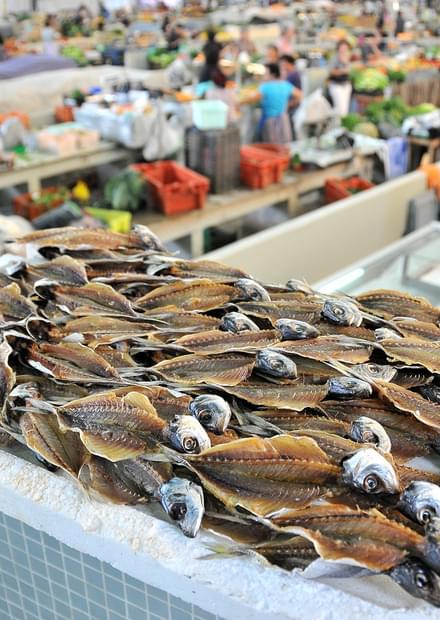The origins of Nazaré
Nazaré has ancestral yet extremely interesting origins that help us understand the spirit of the place and its unique identity. The beach of Nazaré was in the past a lagoon rich in fish. In fact, this lagoon dates back to the Palaeolithic and Neolithic era. It was described as "a vast peaceful water course".
Therefore, communities began to settle on the margins of this lagoon, but it was not until the end of the 12th century that it was named Pederneira Lagoon. It has always been a place of fishermen and sea people, as well as a spot where ships were built. Located in the region of Alcobaça, Pederneira was a the wealthiest most populated town of Cistercian lands. It had an hospital, a shipyard, guesthouses, taverns, butcheries and a cereal fair.
In the end of the 14th century, as the new beach of Nazaré - Sítio da Nazaré - developed, as a result of the silting of the Lagoon, the population of Pederneira Lagoon decreased significantly. Sítio da Nazaré is located in the highest most dramatic spot of the promontory. The hermitage Ermida da Memória is located in Sítio da Nazaré. An image of Our Lady was found within a small cave in 1182 that was said to be from Nazareth in Galilee.
The first houses of fishermen began to be built under this promontory in front of the sea. In 1780, there were already 58 one-storey houses. This place was from then on called Nazaré .
Many centuries later, in the beginning of the 20th century, the beach of Nazaré turned into a flourishing summer resort. In Sítio quarter, glamorous Grand Hotel Club and Casino-Hotel opened its doors.
As the years went by, Nazaré became a popular beach resort in Portugal and a crucial tourism destination.
It took one wave
The canyon of Nazaré is a puzzling geological phenomenon which is 5.000 meters deep and about 230 km long. It is the cause of such incredibly monster waves, attracting top surfers from all over the world. The big wave season begins in November and ends in February.
Since 2011, when fearless Hawaiian surfer Garret McNamara surfed an unthinkable 78 feet (23,77 meters) wave during the ZON North Canyon Show in Praia do Norte beach, Nazaré was on the world spotlight. It became a world-famous surf destination. But only for the brave !
The once fishermen village of Nazaré turned into a mandatory spot of the world surf scene!
Beyond the big waves
There’s more to Nazaré than its wow-effect waves. In fact, Nazaré is also a charming fishermen town and a colourful seaside resort, where we can still feel the huge importance of tradition. Nazaré has developed in a very sustainable way, paying homage to its common heritage and historical memory.
One of the most moving images of Nazaré is the horse mackerel – “carapau” – hung out to dry in the sun. Or its beautiful boats bursting with colour and powerful life-related messages. Or friendly women dressed in their 7 skirts selling dry fruits and talking out loud. As if time stood still. Just like the black clad women in Nazaré beach back in 1955, brilliantly depicted by the lens of the great French photographer Henri Cartier-Bresson. They are the very soul of the place.
Local gastronomy is mouth-watering, mostly consisting of shellfish and fish specialities like fish stews – “caldeiradas” – and dried fish, an absolute must in Nazaré!
The best view over Nazaré can be taken from Sítio district, where you can get to by funicular. This is the ideal spot to contemplate this absolutely unique coastal town, while feeling the wind on your face. The sea as you have never seen it before.
Welcome to Nazaré, a destination whose warm-hearted population will make you feel like home! And that makes all the difference.
Distances
From the Portuguese airports
🚗 LIS Airport ➔ Nazaré - 117 km
🚗 OPO Airport ➔ Nazaré - 226 km
From Spain
🚗 Salamanca ➔ Nazaré - 419 km
🚗 Ourense ➔ Nazaré - 421 km
🚗 Vigo ➔ Nazaré - 361 km
🚗 Valladolid ➔ Nazaré - 538 km
🚗 Madrid ➔ Nazaré - 581 km










